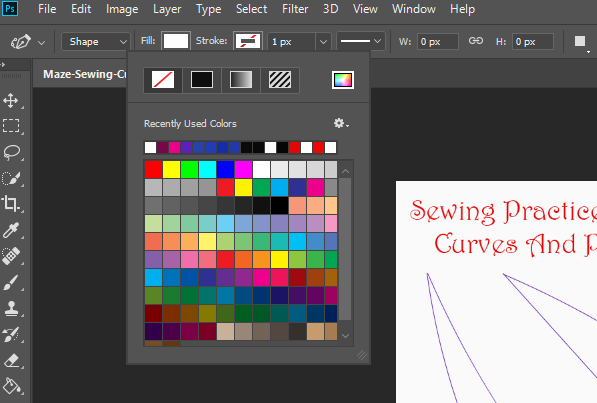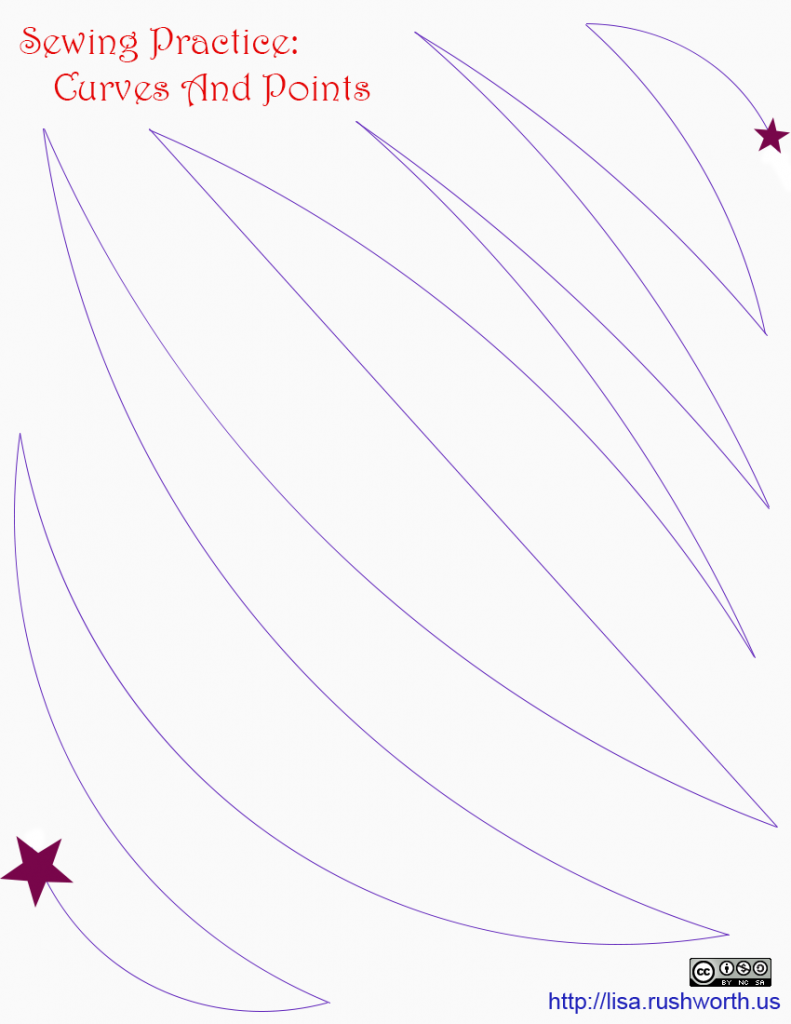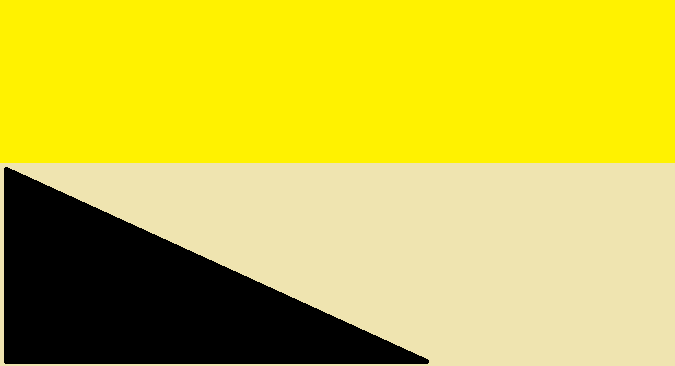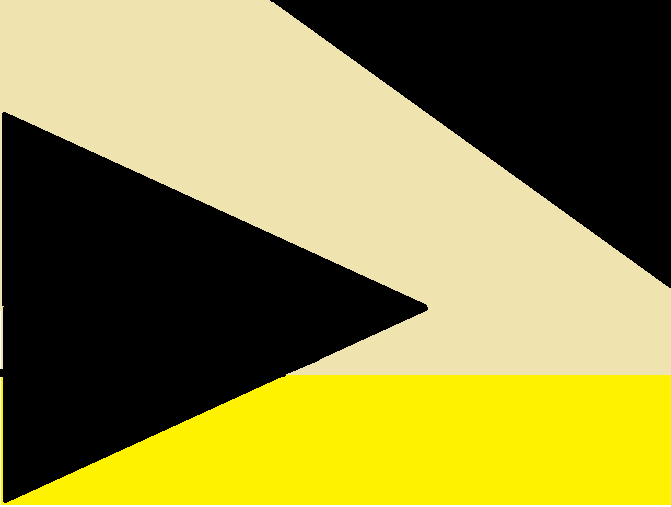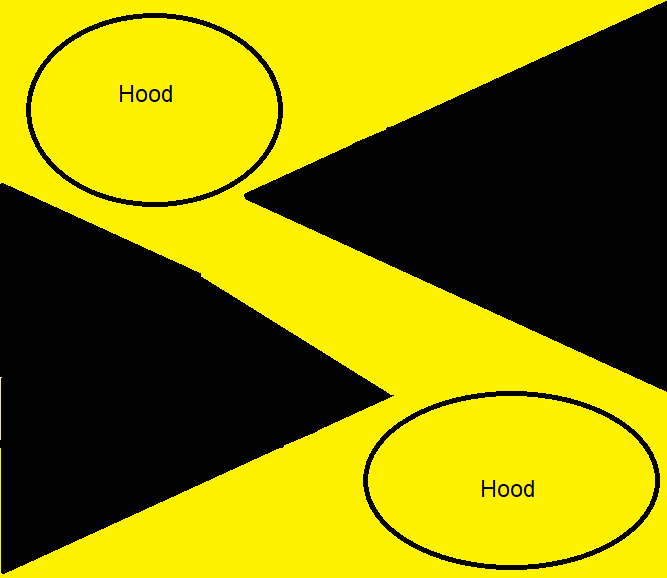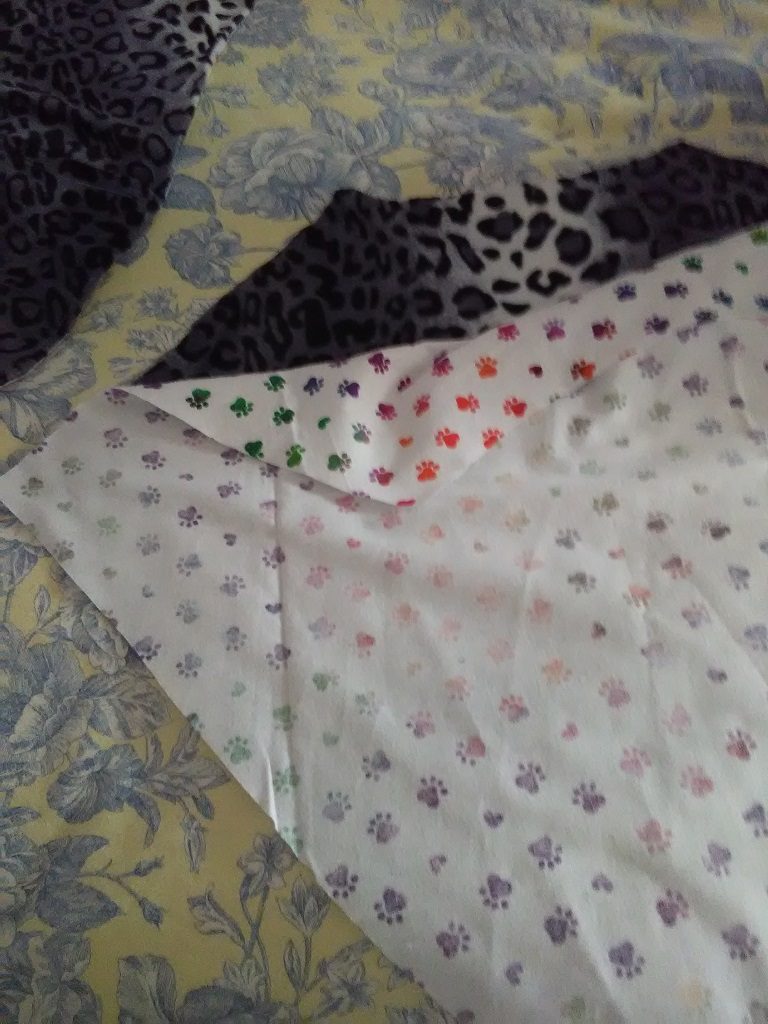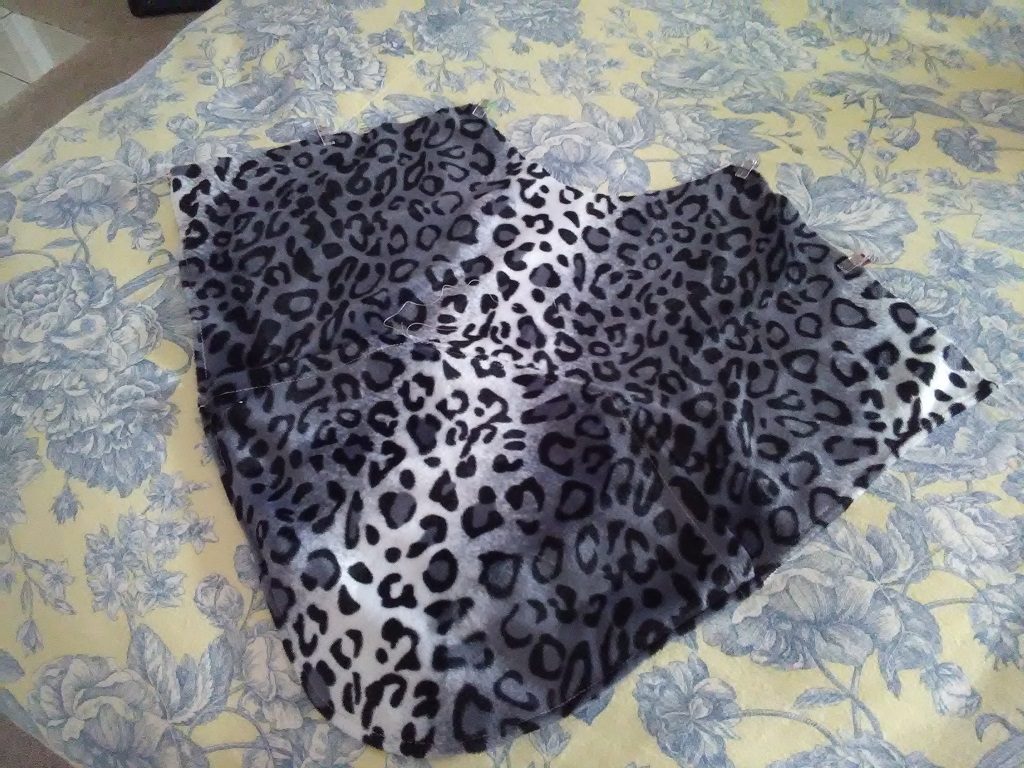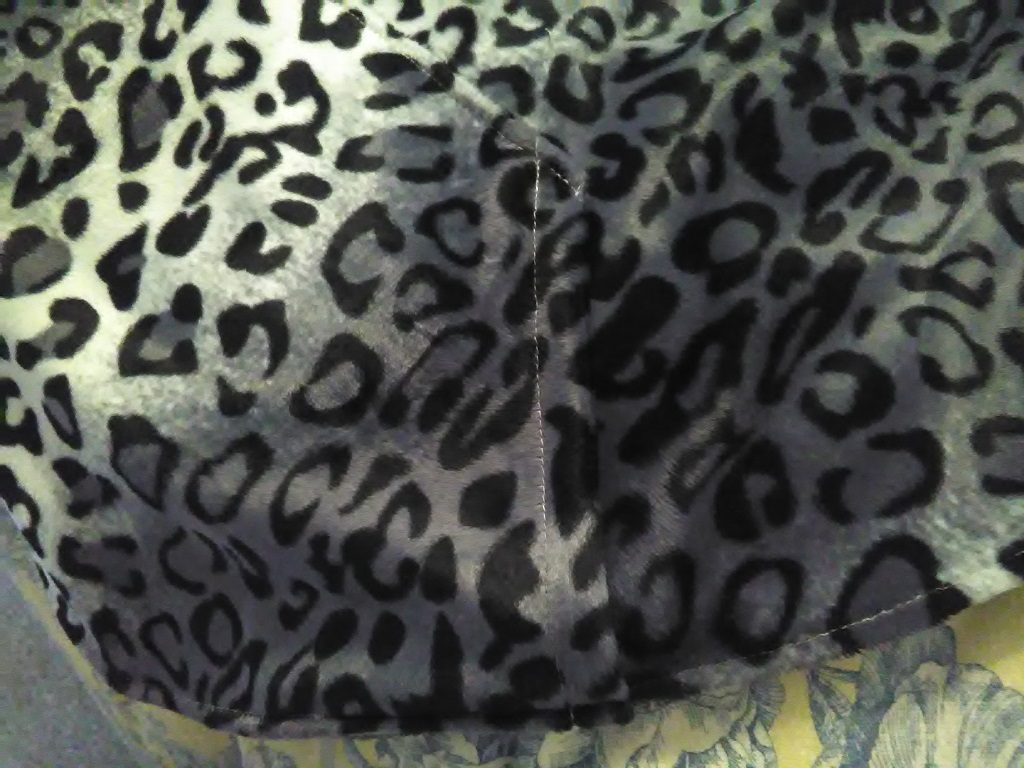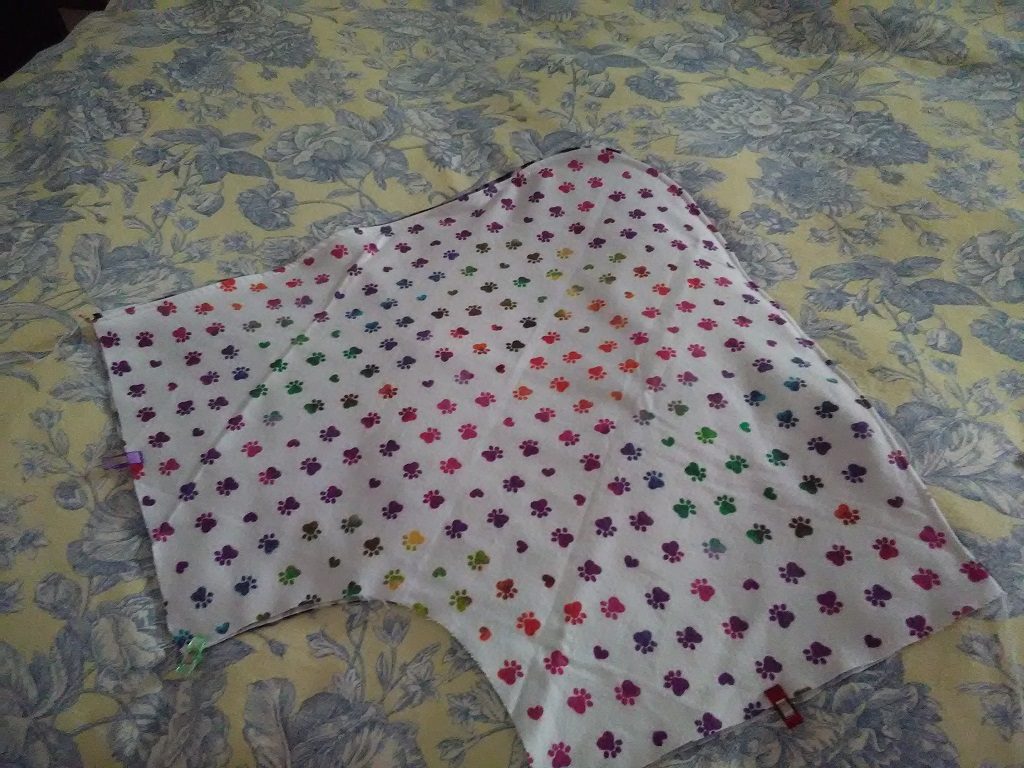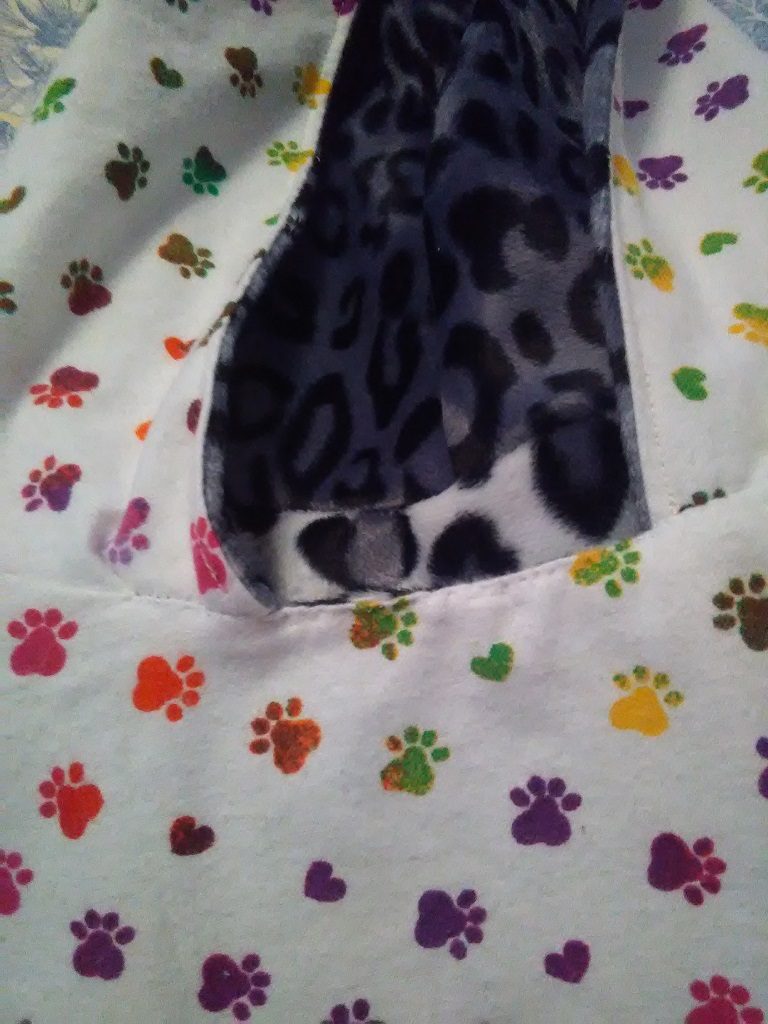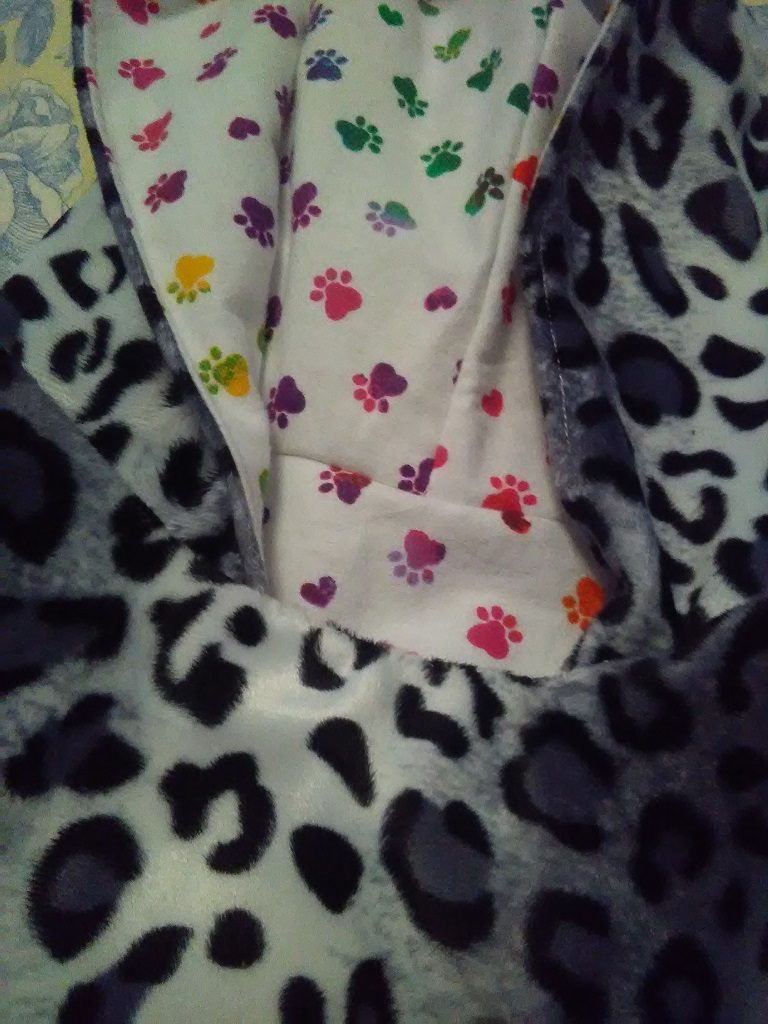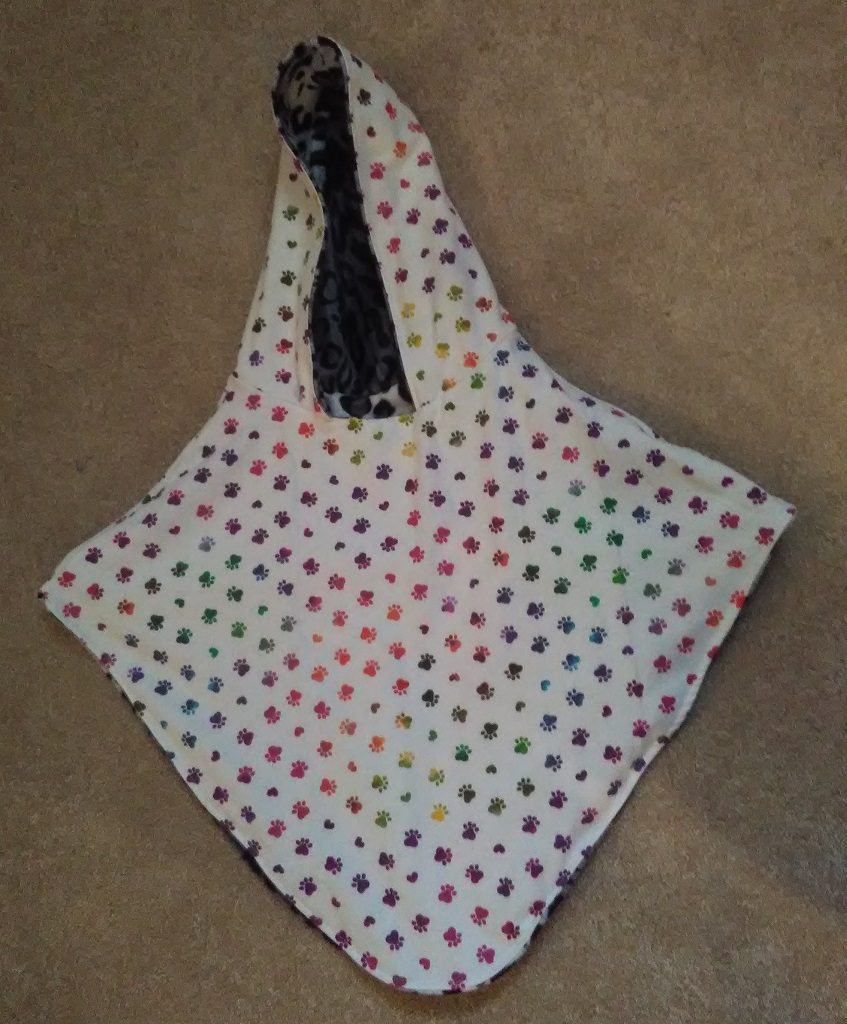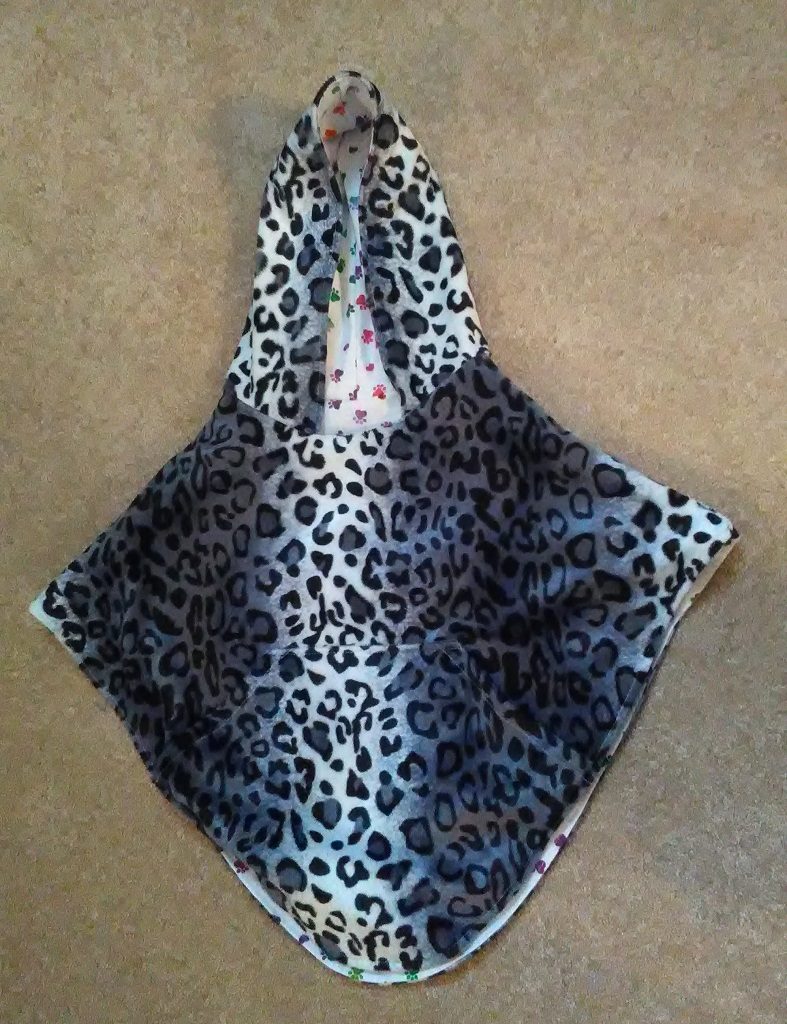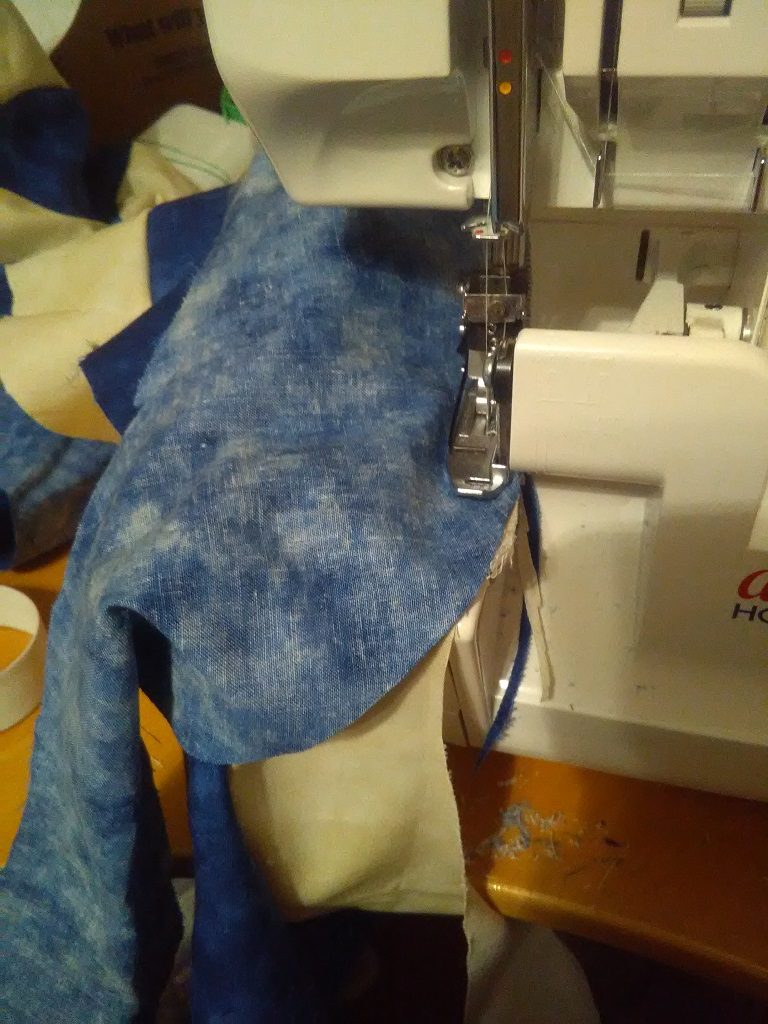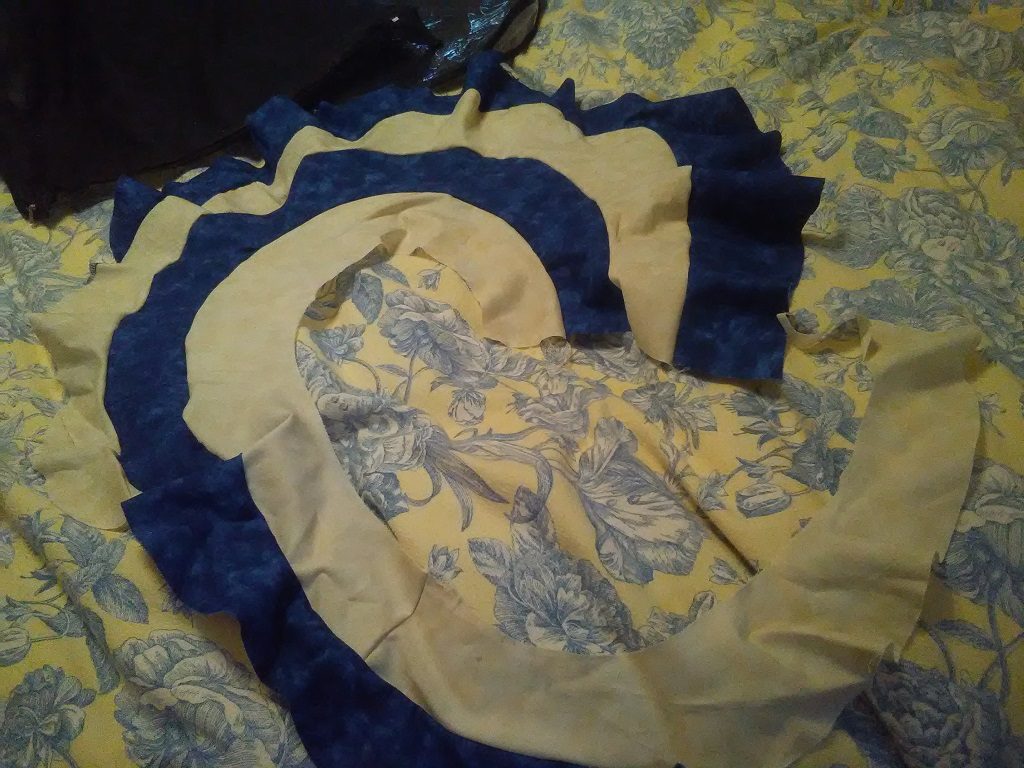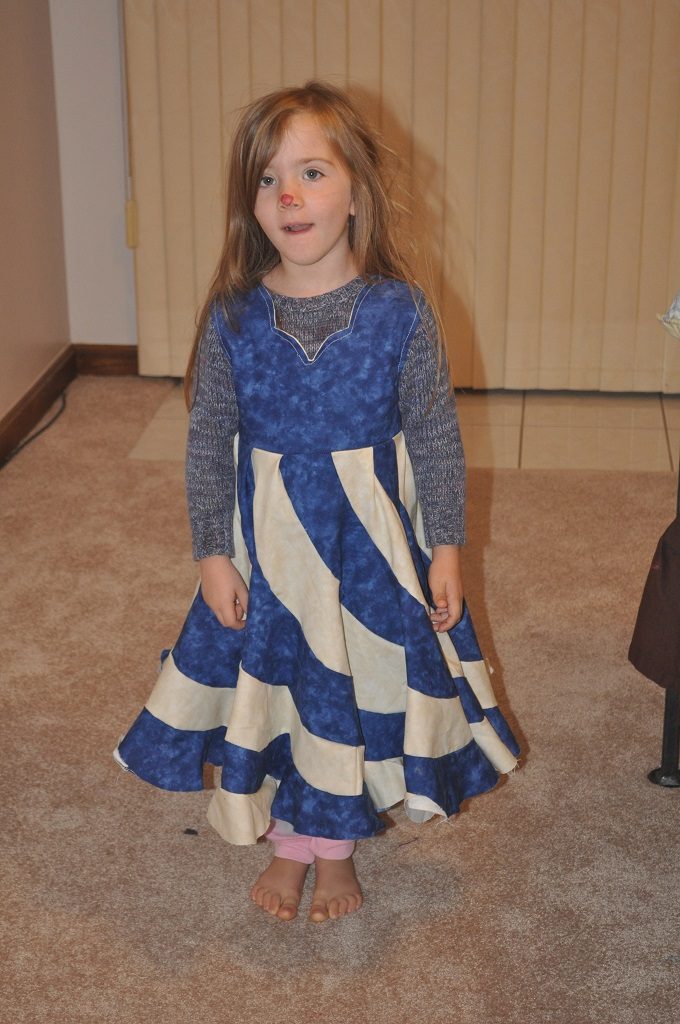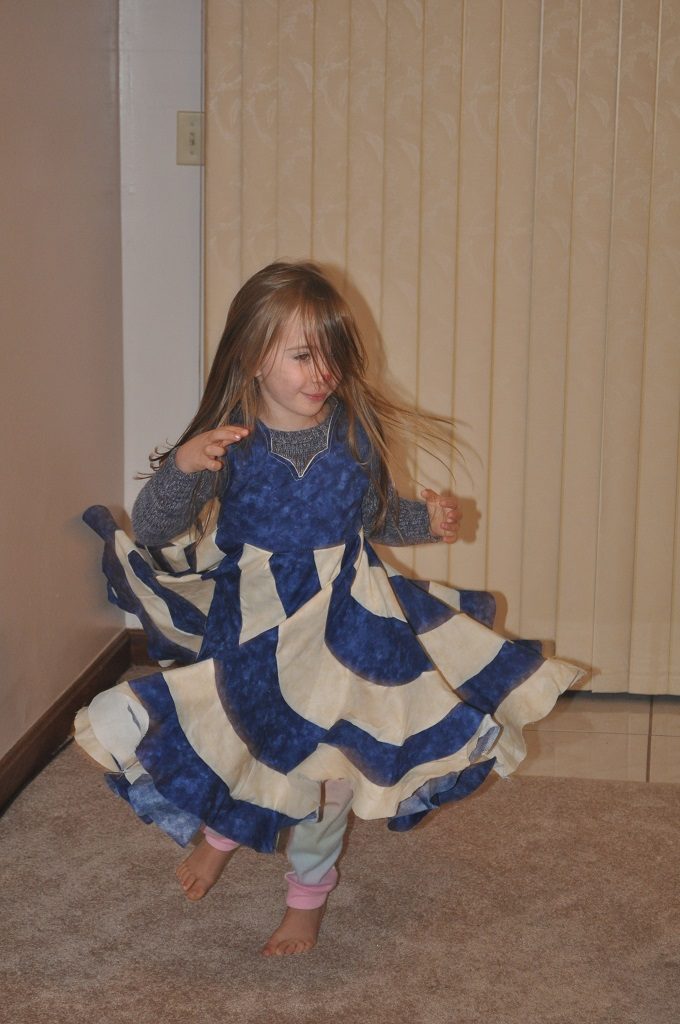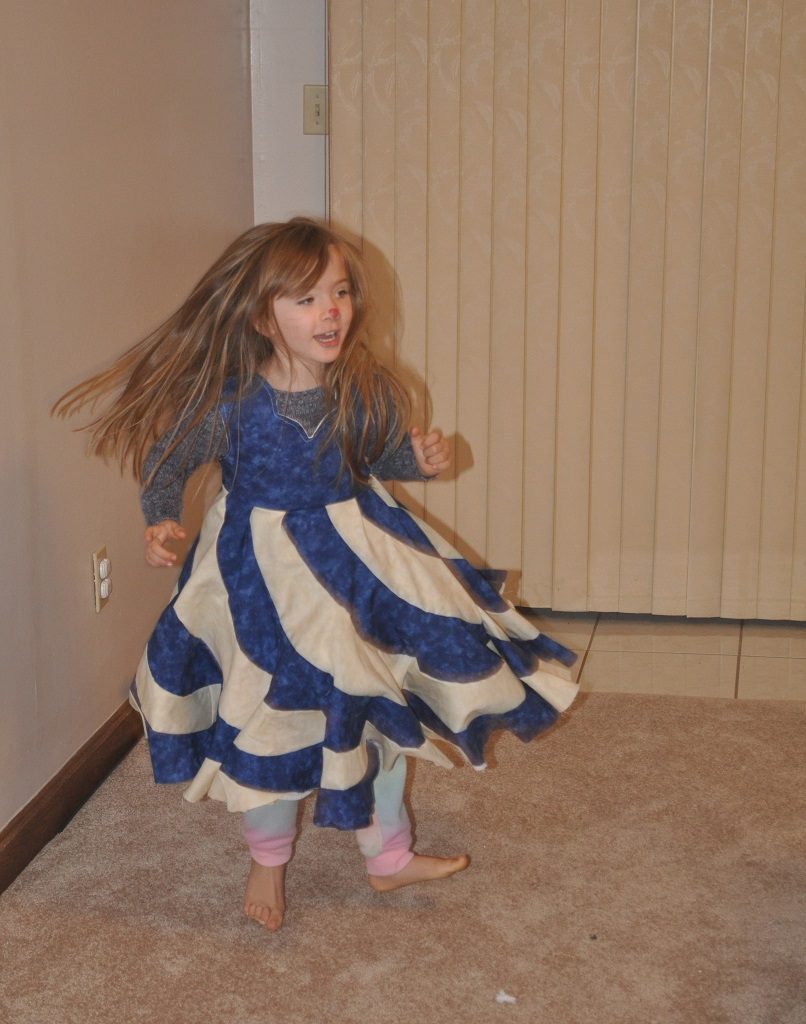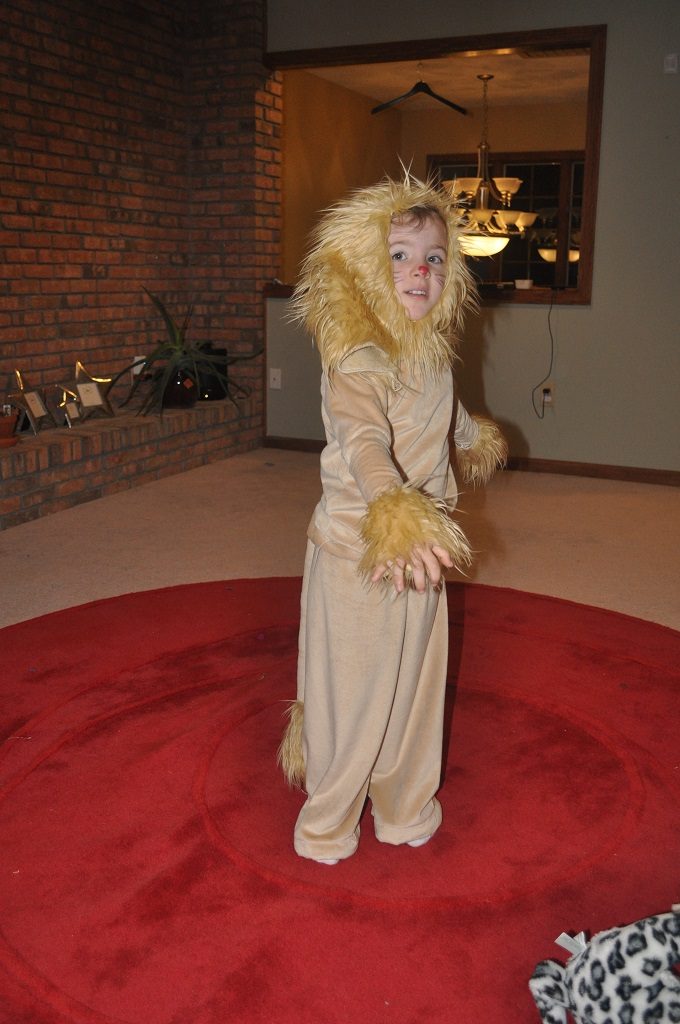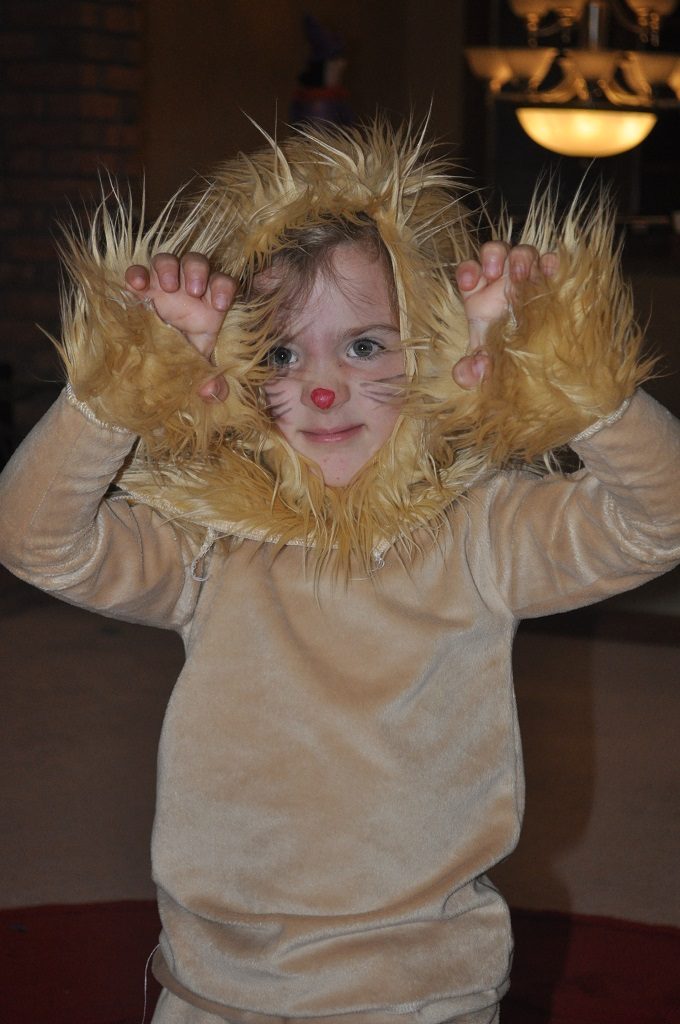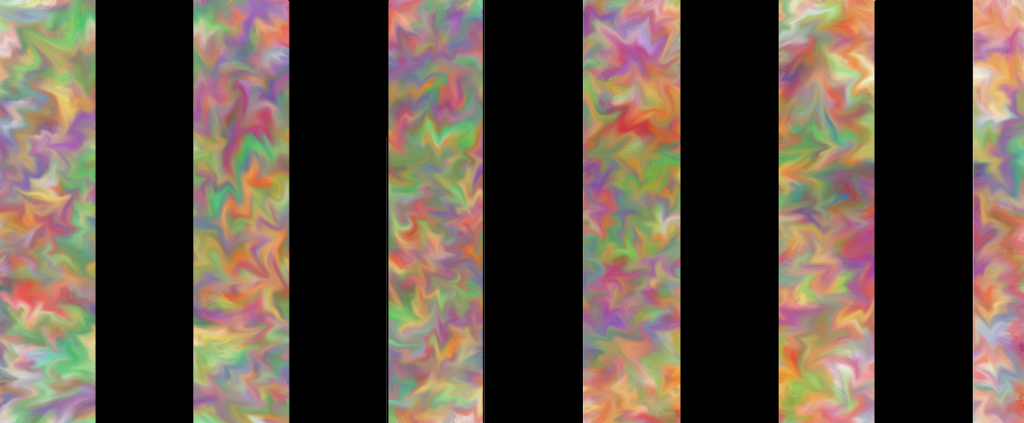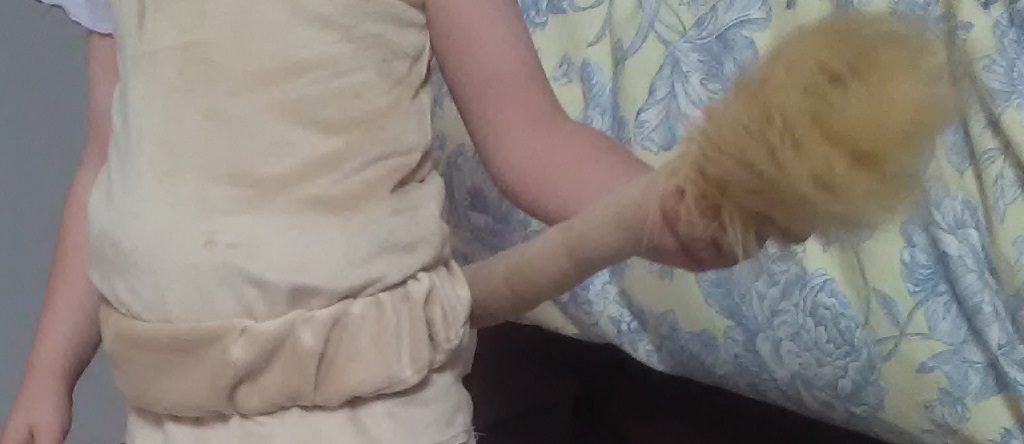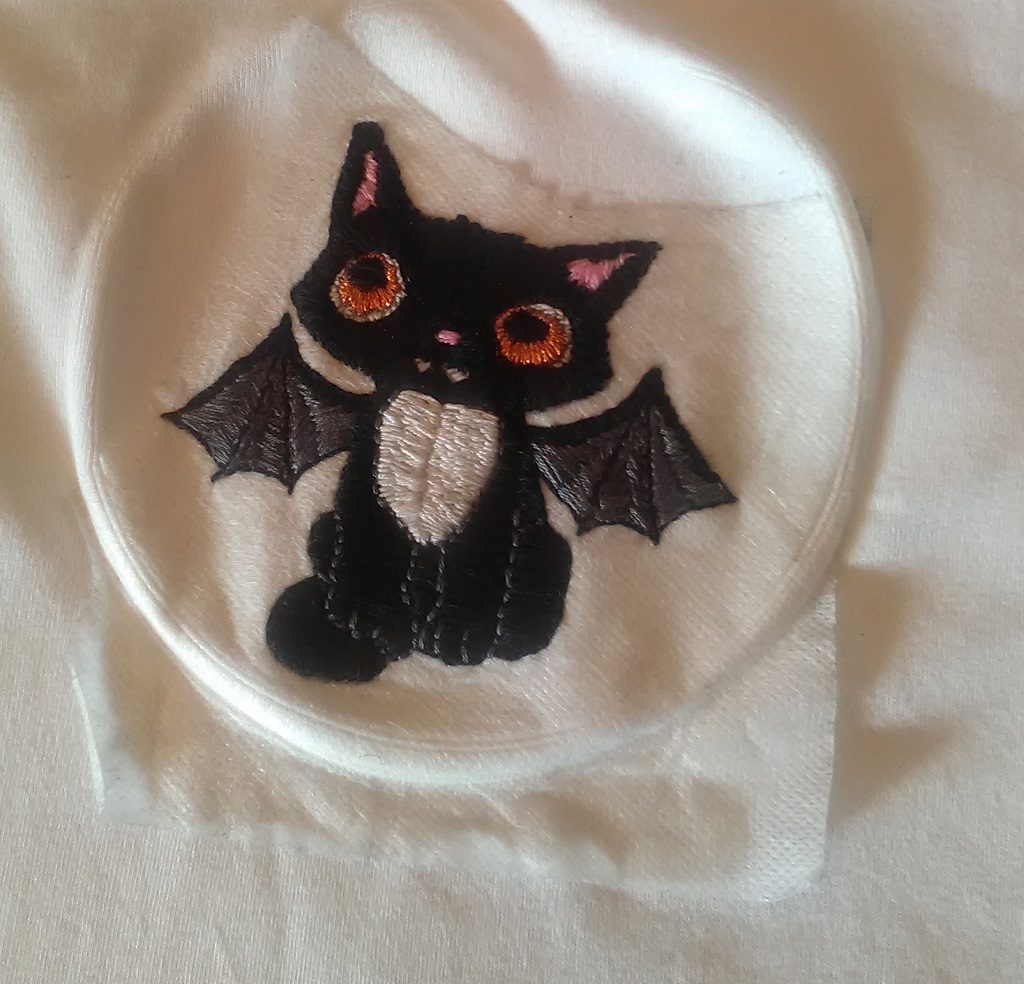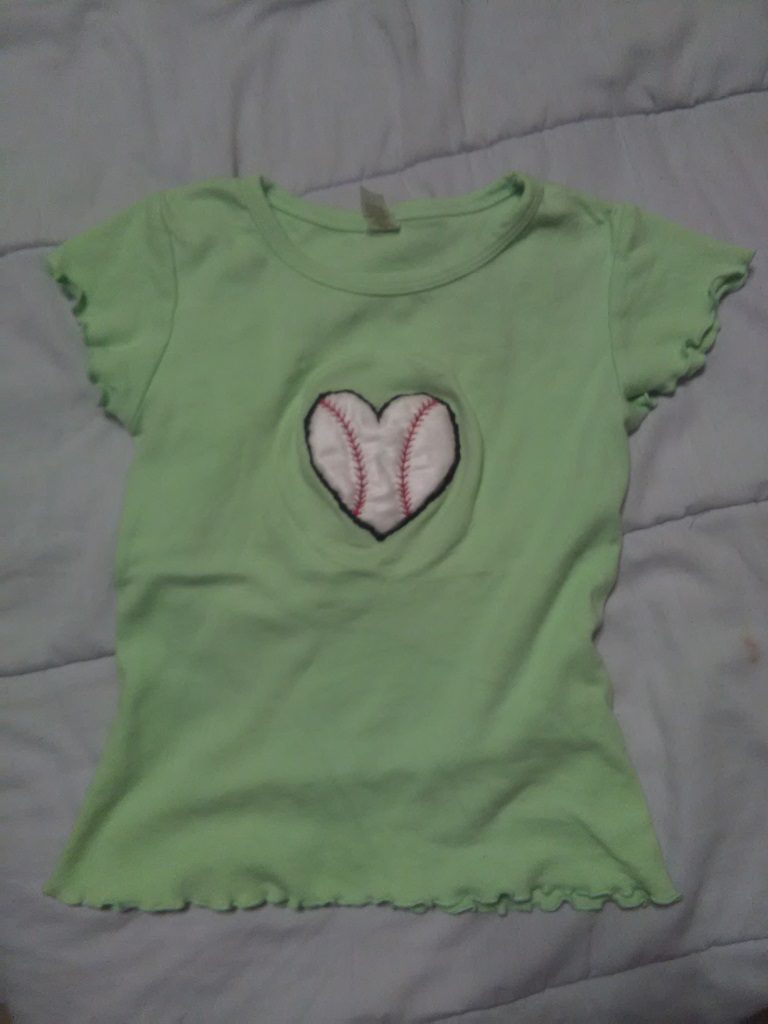I want to make slippers to wear around the house. I was thinking about making quilted slippers – with the Dream Puff batting I used in Anya’s sleeping bag, I’m sure quilted slippers would be warm. And I could use a sturdy fabric like denim for the exteriors. But then I saw these warm fuzzy slippers … with the Sherpa fleece inside.
Tag: sewing
First Sewing Projects
Anya’s birthday present this year is learning to sew with a machine. I’ve already got sewing practice papers ready to go, and need to come up with a few projects for her to get started. She’ll do the project end to end (i.e. we’ll read through the instructions, figure out what it requires, shop for fabrics {shop may mean peruse mom’s stash} and hardware {certainly means peruse mom’s stash. Any component I don’t need quickly, I order direct from China via AliExpress for 80-90% less than retail.}, measure, mark, cut, sew. The only thing I’ll do is run the edges through the serger to ensure she doesn’t have frayed fabric.
So far, I have three projects for her:
A two layer gathered skirt – a project for the author’s five year old. I would love to find an all-over eyelet fabric in black and use it over a bright neon solid, but haven’t been able to find any all-over eyelet fabrics. So we’ll see what Anya likes. This teaches sewing straight lines & running elastic through a casing.
The ‘magic pillowcase‘ – I made one of these, so I know it’s pretty easy. This requires more straight line sewing, but adds complexity because the multiple layers of fabric need to be lined up. Also teaches the idea of getting some fabric out of the way so you can stitch things together.
A fabric belt with D-rings at the end. Turning a small tube right side out and top-stitching.
Kid Sewing
Anya wants a sewing machine — and while I try not to be a crazy overprotective “everything is going to kill you” mom … well, high speed pokey things coming at little fingers kind of freak me out. I kept her request in mind, though. Then this month’s Nancy’s Notions catalog had a finger-safe plastic foot in the front cover, complete with a young girl using the machine. That is exactly what I didn’t know I needed. So I set out to research a good beginner sewing machine for an almost five year old kid.
There appear to be two paths – a quasi-toy with a lot of safety features and simplified operation or portable sewing machines that are riskier to use and can be frustrating for few sewists. The deciding factor for me was the device’s useful life. I don’t want to buy something that will need to be replaced in a year or two when she’s more experienced in operating a machine. And I figure it’s best to learn everything at once rather than add the foot controller later — a bit like learning with a manual gearbox v/s learning with an automatic and then having to un-learn some bad habits that weren’t bad habits on an automatic. Plus Anya knows when we have a ‘real’ one and she’s got a ‘fake’ one for kids. I decided on the Janome Derby – a little five pound machine that has several stitch options. Happened to find it for sale at Michael’s for 60$ and they had a 20% off almost everything coupon — 51.60$ including tax!
I wanted to come up with some sewing practice for her, and I found a printable ‘sewing maze‘ online. Such an awesome idea – you haven’t “ruined” a project if you don’t sew exactly on the line. I printed a few copies for Anya (and a few for me). I could not find anything similar to practice sewing curves. Longer than I’d like to admit figuring out how to get Photoshop’s curvature pen to make a shape instead of a light blue ghost that doesn’t actually show up anywhere. (Once you’ve selected the tool, you have to change the ‘stroke’ setting from the white with a red line through it to, well, something. I nulled out fill, but I do not know if that was necessary.)
Once I could draw a smooth curve that prints instead of a fully printable squiggle or a lovely curve that disappears when you print or export, I have my own sewing practice sheets for curves and points! Now I just need to think of a cool project to do next.
Pumpkin Pie Poncho
I bought Candy Castle Pattern’s Pumpkin Pie Poncho pattern when it was first released. I finally made one today. It is a quick project. The pattern piece get cut up and isn’t really reusable. Saves paper if you are just making one, but requires extra printing or tracing if you are making multiples of the same size.
The pattern says it needs 1.25 yards of a 60″ wide lining fabric for a size 6. Problem is – I only had one yard of the flannel lining, and it was 42″. Looking at the pattern piece for the main body is not a rectangle – one side is a lot narrower than the other. Instead of folding the fabric in half and cutting two pieces along the folded line, I folded the fabric just enough the poncho body fit on the part with two layers. Cut one piece along the fold
Then unfold the fabric fold the *other* side down — there will be parts where there is only one layer of fabric – where the first piece was cut. Align the pattern piece so the widest section is away from the cut section. The narrow section of the pattern fits on the fabric with two layers. Cut the second poncho piece.
Unfold the fabric – there is a odd shaped bit adjacent to each poncho cutout – these can be used to cut the hood piece (or cowl). Voila – poncho lining from one yard of 42″ wide flannel.
When I started fitting the pieces together, I realized this could be done as a reversible poncho. Doing so required modifying the process a bit — the main piece fabric and lining were still aligned right sides together.
I used clips instead of pins, so Anya was able to ‘test’ the poncho as it was being constructed.
Serged along the bottom curve, turned right way about, and top stitched. The pocket fabric was still sandwiched between to attach it.
The top stitching runs right along the serged part, so it’s a little bit stiff and puffed up.
Then the fabric and lining along the arms were stitched separately – leaving the seams encased inside the ponch. The two pieces of each hood were serged together. The two hoods were nested inside each other, right sides together, and serged along the front. Turned the hood right side out and top-stitched along the front. The two fabrics, at this point, are free along the neckline. The main fabric of the hood was lined up, right sides together, along the poncho neckline and serged just to the main fabric poncho body.
The lining fabric was the tricky bit. The same basic process – line the fabric up, right sides together, with the poncho body lining material and serge it together. *But* it cannot be completely stitched on the machine a the stitching reduces the hole through which you are sewing the material. I serge it for all but about 5″ – moving the still-opened hole along the seam being sewn. I then turned the remaining edges over and hand-stitched the remaining bit that is right along the front neckline. Anya doesn’t like hoods that wrap around her neck (although she’ll wear a scarf, go figure!), so I modified the hood to have a small gap along the front.
The process is a little more difficult, but we’ve got a pawprint poncho and a snow leopard one. There’s no pocket on the flannel side — mostly because I didn’t have enough fabric 🙂 But she keeps her arms on the inside and uses the snow leopard pocket.
Peppermint Swirl Dress – Almost Finished!
I had put the peppermint swirl dress on hold whilst making her lion costume; now that Halloween costumes are all sorted, I wanted to try assembling this thing. It seems quite intimidating – fourteen different slices in the skirt, all curves. And the strips look too long. I know the instructions said the whole thing would look off until you attached the first and last slices to make a whole circle … but holding a single strip up against my tiny person, I thought this might be an adult-sized skirt. In fact, I think you could use one of the larger child size patterns to make a short adult skirt. There’s a lot of gathering to the bodice, and her size 6 fit around my waist.
I used Moda Marbles in vanilla and indigo. No matter how silly it sounds, I was quite paranoid about attaching the strips in the wrong order. And I’m only working with two colours! But someone else who makes these dresses posted her technique — stacking the fabric in the order it would be used, then just pulling the next piece of fabric off the pile as she assembles the skirt. Perfect! I could double-check the order — asked Anya to tell me the colours, and listed for the alternation.
Anyway, assembly looks intimidating. You’ve cut twenty-eight segments and attached them together into fourteen individual strips. That’s a big pile of fabric. The whole thing came together quickly – like thinking I must have done something wrong quickly. This is certainly a serger project – it’s a lot of seams, and I would be devastated to spend this much time cutting and assembling a project (and five yards of fabric, even cheap fabric, adds up) only to have seams fray after a few uses. With a serger, though, I was able to assemble the entire thing in a couple of hours . The arc of each slices can be held straight for the ~2 inches between the front of my serger and its needles. I quickly developed a technique of sewing slowly and aligning the two fabric pieces at the front of the serger.
It does look odd (and huge) as the pieces come together.
I still need to hem the bottom and attach some snaps, but I needed to check the size one last time. Anya is so thrilled with the dress, she wanted to keep wearing it.
And make sure it spun well.
And make sure it danced well.
She says it works 🙂
I need to fix the top-stitching along the neckline. The thread pulled funny in a few places, and I mis-judged the center V. Final step will be to hem the bottom – I’m thinking of a rolled hem to keep it light-weight and “spinny”.
Halloween 2017: Lion Costume – Furry Suit
I have Anya’s Halloween costume finished. I used a minky fur in camel for the body and a long-haired fur in camel for the mane and fur accents. The costume is just a shirt and pants made with minky fabric. For the pants, I used a free pattern from FunFleece — where the pattern says you can cut the pieces simultaneously on folded fabric, it should indicate that you need to cut two mirrored. If you cut on folded fabric, it is mirrored by design. If you cut two pieces separately … well, it won’t go together well, you’ll have to rip the seam, and then cut one the right way. No reason I know this 🙂 Once I had mirrored pieces, it was a quick job to serge it together, fold the waistband, insert elastic, and stitch the band together. The legs were quite long, so there is a 1.5″ folded hem at the bottom that can be let out as she grows. The shirt is a pattern I drafted based on one of her long sleeved t-shirts.
The mane is a large rectangle with each side serged to keep the fur from shedding everywhere. It is serged together under her chin and tucked both sides of her forehead to fit the opening to her face. The back is opened so the mane pulls on easily. I used a few sewing clips to pull it together.
I cut small elongated trapezoids of the long fur fabric and serged them together to make a cuff. They just slip over her hand like a bracelet. Add the tail I made earlier, and we have a lion:
Somtimes a fierce lion with claws:
Peppermint Swirl Dress
I absolutely adore the peppermint swirl dress pattern, and would love to make one with a rainbow skirt. I haven’t the slightest idea what to do for the top … another colour looks out of place, but using one of the skirt colours in the top looks odd too. Then I saw a rainbow skirt where seven of the fourteen panels were black with a black top. It was an awesome look. Then I saw black stripes with a rainbow stained-glass. I would have made it, but the fabric was a limited run that became unavailable at the end of last month.
So I thought about designing my own rainbow fabric for the dress. https://www.spoonflower.com/designs/6869492-cubistrainbow2-by-lisa5 … split out with black strips, it looks like this:
Halloween 2017: Lion Costume – Tail
To make Anya’s lion tail, I started with an elongated trapezoidal piece of furry fabric — not quite a rectangle because I wanted it thicker at the base of the tail and thinner at the end. I folded it in half length-wise, with the right sides together, and used the serger make a fabric tube. Turned it right side out and stitched the ‘tip’ of the tail closed. I used a bunch of poly-fil and slowly stuffed the tail (using big wads to stuff the tail made it look lumpy. I took small pinches of the stuff and pushed it to make a firm filling.). Then I hand-stitched a strip of long fur around the tip.
I wanted something Anya could put on by herself, so clipping the tail onto her clothes wouldn’t work. I decided to use an elastic band – cut a 4″ wide strip of the lion fur fabric about 6″ longer than Anya’s waist circumference, folded it in right sides together, and serged it into a tube but left a few inches at the end. I then inserted the tail into the tube and folded it so the top fabric of the tail was aligned with the top fabric of edges of the waistband fabric and finished serging the strip. I then turned the whole thing right-side out — so the tail was firmly held into the band and dangled down. I measured out a strip of elastic about 2″ bigger than Anya’s waist, threaded it through the band, and sewed the elastic together with a lot of overlap. My hypothesis is that I’ll be able to open the seam and make her bands bigger as she grows. Once I confirmed it was tight enough to hold the tail up on her waist, I hand-stitched the tube together at the ends to make a band. Voila, one lion tail!
Halloween T-shirt
Anya will soak the shirt later today to dissolve the transfer paper, so it’s not quite done. But here’s her Halloween kitten t-shirt. The pattern is from Urban Threads — an awesome place for hand and machine embroidery patterns.
Baseball T-Shirt: Completed
I finished Anya’s baseball t-shirt!
I sketched a quick heart in Photoshop, and drew in two lines of baseball-style stitching. The image was printed on Transfer EZE ‘paper’ using our laser printer (which answered the question: can you laser print on this stuff?). I then took a little scrap of quilt batting and laid it on the shirt. Placed a scrap of white satin on top, then stuck the Transfer Eze print onto the satin. It adhered quite well to satin – was a little concerned!
Put it in a hoop and embroidered the red stitching to hold the whole thing in place. I then trimmed the satin about a quarter inch outside of the heart’s lines; the batting was trimmed to be about a quarter inch smaller than the satin. Finishing the project was just needle turn appliqueing the heart to the shirt (using what amounts to a really short satin stitch).
The quilt batting really enhances the stitch definition for the red lines, and it makes the whole design puff out a bit from the shirt.
